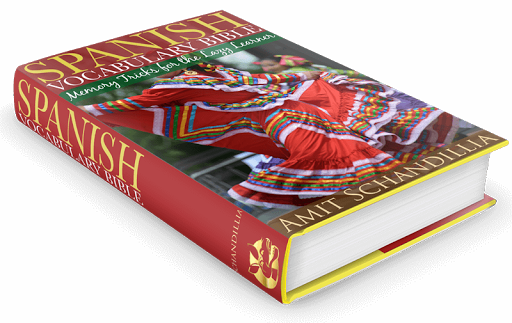So what is preterite again?
In simpler terms, preterit is the tense used in Spanish, as well as other Romance tongues, for past actions that are seen as completed. Completion here implies that the event had a definite beginning and an equally definite end. This is in sharp contrast to the imperfect tense where there is no such well-defined completion, hence the name.
Some examples illustrating this tense:
- I ate a taco last night (preterit because I started and finished eating well within last night)
- I ate tacos when I was in Mexico (imperfect because I am implying eating as a habitual action in the past; I used to eat tacos when I was in Mexico)
- She was beautiful (imperfect because being beautiful is a state of being, a characteristic, a trait and the trait hasn’t been implied to have changed in the past; this can also be rendered as “she used to be beautiful,” a tell-tale sign of the imperfect tense)
- Juan spoke for 5 hours (preterit because the act of speaking did end after 5 hours)
- It began to rain in the evening (preterite because even though the rain could have lasted indefinitely, the event in question – the beginning of rain – had a specific time of occurrence, evening)
- Ana ran through the woods (preterit because Ana ran only once and this wasn’t a repetitive or habitual action)
So, we see how preterit is in sharp contrast to the imperfect tense in Spanish when it comes to past actions. And it is important that we recall these differences while communicating in Spanish in order to sound correct and appropriate. Let’s see how the preterit conjugations work in Spanish.
Basically, regular verbs – verbs that follow the standard conjugation pattern, such as hablar, vivir, beber, etc. – follow either of the two conjugation rules depending on whether they end in -ar or otherwise. All regular verbs with the -ar ending conjugate as below (illustrated using hablar as example):
-é (hablé I spoke)
-aste (hablaste you spoke)
-ó (habló he/she/it spoke)
-amos (hablamos we spoke)
-aron (hablaron they spoke)
The regular -ir and -er verbs follow a slightly similar pattern with some minor differences. Here’s the conjugation using beber as example:
-í (bebí I drank)
-iste (bebiste you drank)
-ió (bebió he/she/it drank)
-imos (bebimos we drank)
-ieron (bebieron they drank)
Alright, enough of that dead-beat grammar dope; now where’s the trick? Don’t tell me you got to memorize the whole shebang like the rest of my class does...hell, no! Relax, this article wouldn’t be here if that’s what you were expected to do. So, yes, there is a mnemonic just for you; actually, more than one.
Trick to remember the -ar conjugation
First of all, I’d recommend that you stop giving a dead rat’s ass about what this tense is called. Knowing that definitely completed actions in the past are known in Spanish grammar as preterite is not going to serve you one bit during your conversations with them natives. What you must remember, however, is the conjugated endings and the fact that these endings are to be used when discussing past actions that were completed for sure. Doest’t matter if they call it preterit or whatever.
 |
| I ate tasty donuts... Photo credit: Bev Sykes licensed CC BY 2.0 |
Yesterday, I ate a tasty donut
Isn’t this a delicious sentence to remember? Just the very thought makes me drool! So, what’s the trick here? Well, for starters, did you notice the general tense of this statement? It’s very clear that my action (of eating that donut) was performed once and completed at a specific point in time in the past, i.e., yesterday. What does this tell you about the tense? Yes, the preterit!
 |
| ...while they had bottles of rum! Photo credit: Simon Law licensed CC BY-SA 2.0 |
ate – -é
tasty – -aste
donut – -ó
I hope the memory hook has driven home now. As for the plurals, the first person (we) conjugation is a no-brainer as it’s exactly the same as the one in the simple present tense. So, hablamos could mean both “we speak” and “we spoke”. Context is your friend. The third person ending, -aron, rhymes with ron, the Spanish for “rum”. Now, extend the donut visual to include your friends who had rum with their donuts. this should easily fit in with the overall image and help you recall the entire preterit table for -ar verbs comfortably.
Tricks for -ir and -er verbs
The conjugations for these verbs are dominated by the letter, “i” with “a” taking a backseat. For the memory hook this time, try having pistachios instead of donuts. Confused?
Yesterday, I ate pistachios
Notice how the bold portions rhyme with the singular subject -er/-ir endings in the conjugation table:
I – -í
pistachios – -iste
pistachios – -ió
As for the plurals, the trick almost remains the same as that for them -ar verbs. The “we” form remains the same as the “we” form present indicative conjugation for -ir verbs, e.g., vivimos could stand for either “we live” or “we lived”. The “they” form for -ir verbs is also same as that in -ar conjugation with a slight difference in the “a” being replaced by “ie”.



.png)
This article just saved me a ton of frustration thank you ever so much !
ReplyDeleteSuper glad to have been useful. Wish you all the best with your Spanish, Kay!
ReplyDeleteThanks for the tip. I must confess, I find it odd that you've ignored an entire set of conjugations with second person plural. I guess that's another good tip tho' - if you can't make it fit your prescribed mnemonic, just ignore it!
ReplyDeleteConjugations don't have to fit mnemonics...mnemonics have to fit conjugations. It's unfortunate that you think the way you do but coming up with a mnemonic for anything under the sun is a cinch, really. That being said, this website, despite attempting to be neutral to some extent, focuses primarily on Latin American Spanish where a majority of the population doesn't use the informal second person plural conjugation in either speech or writing. That's why it wasn't covered. As said, you are free to device your own (believe me, it's easy).
ReplyDelete